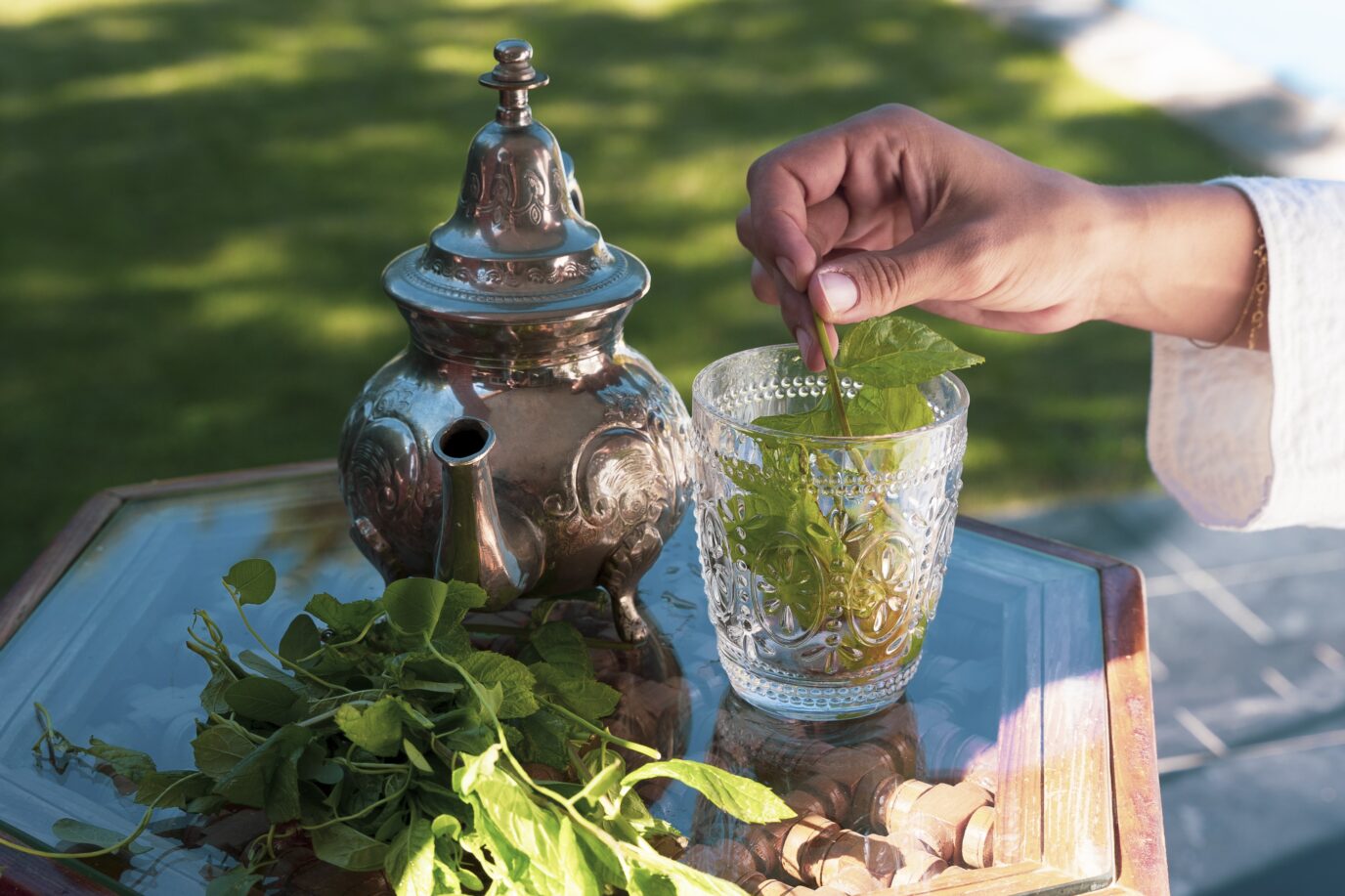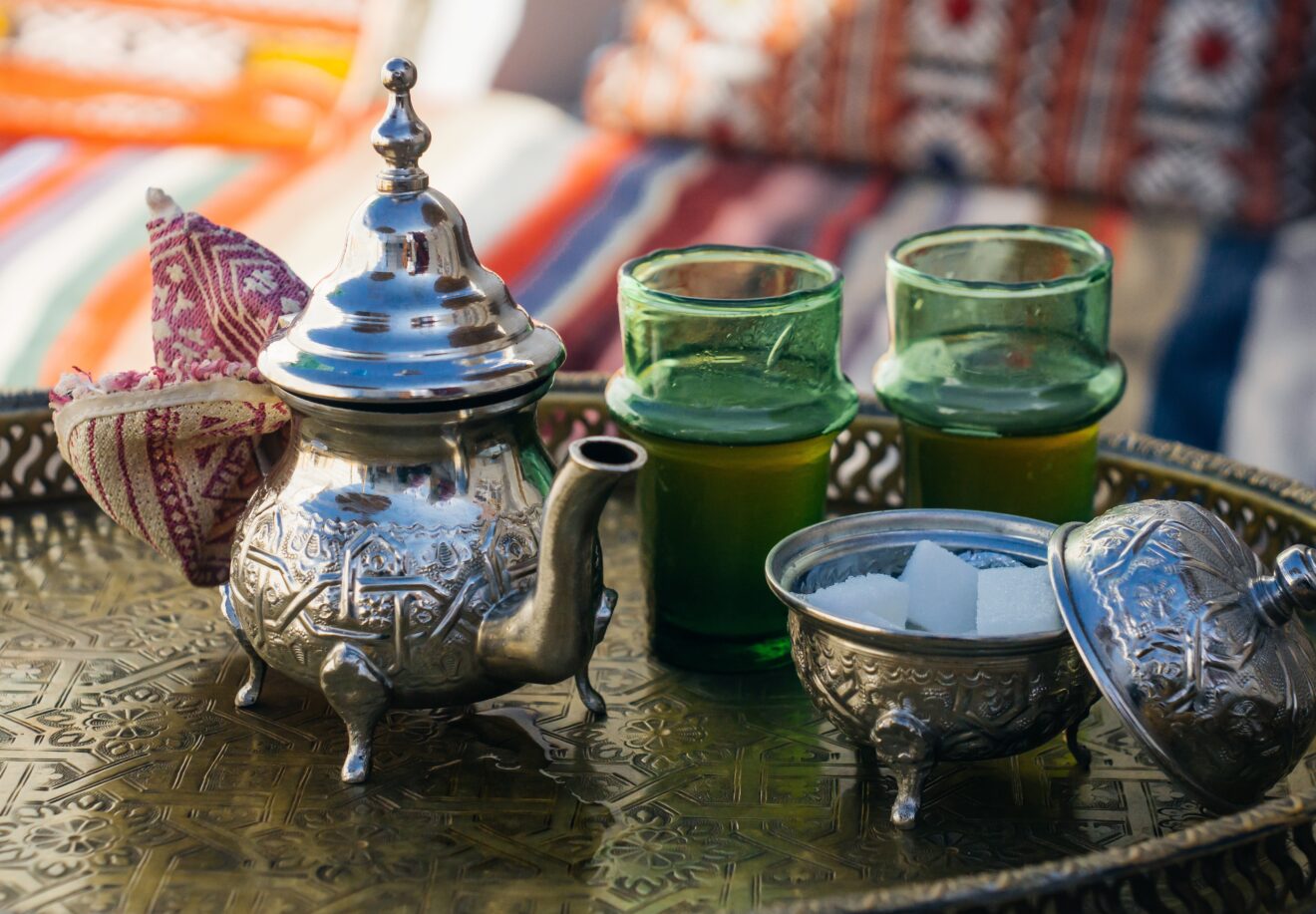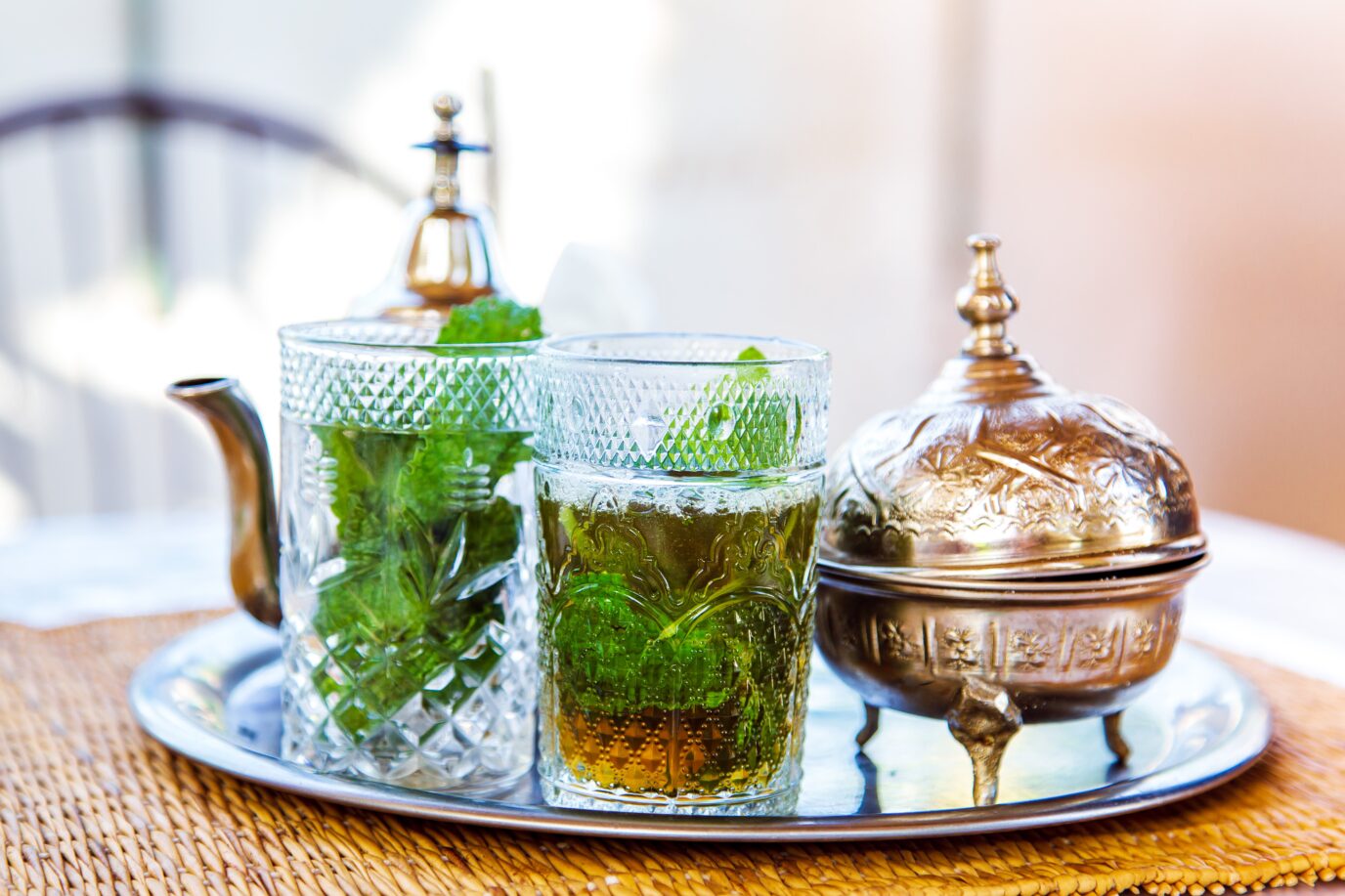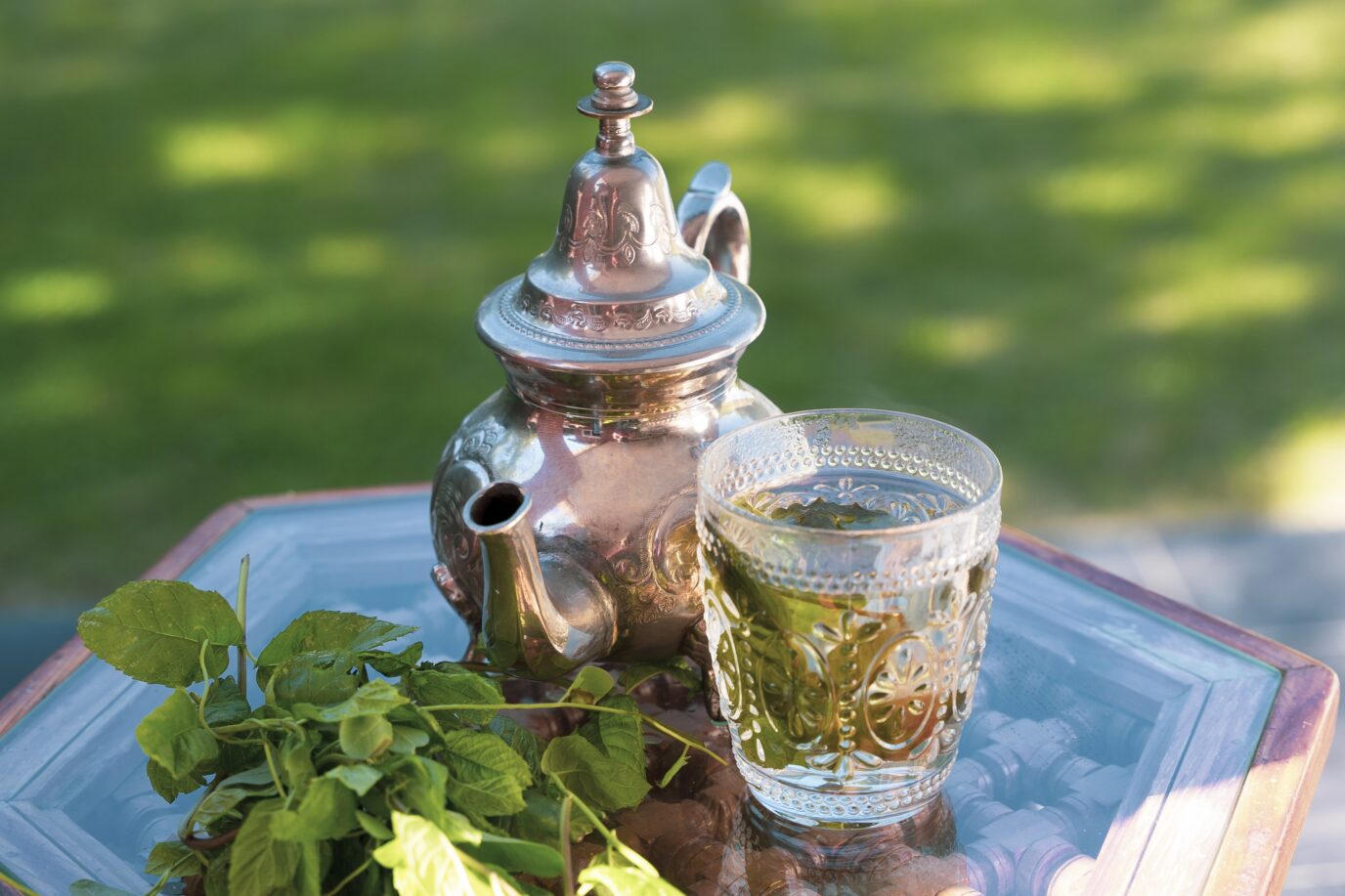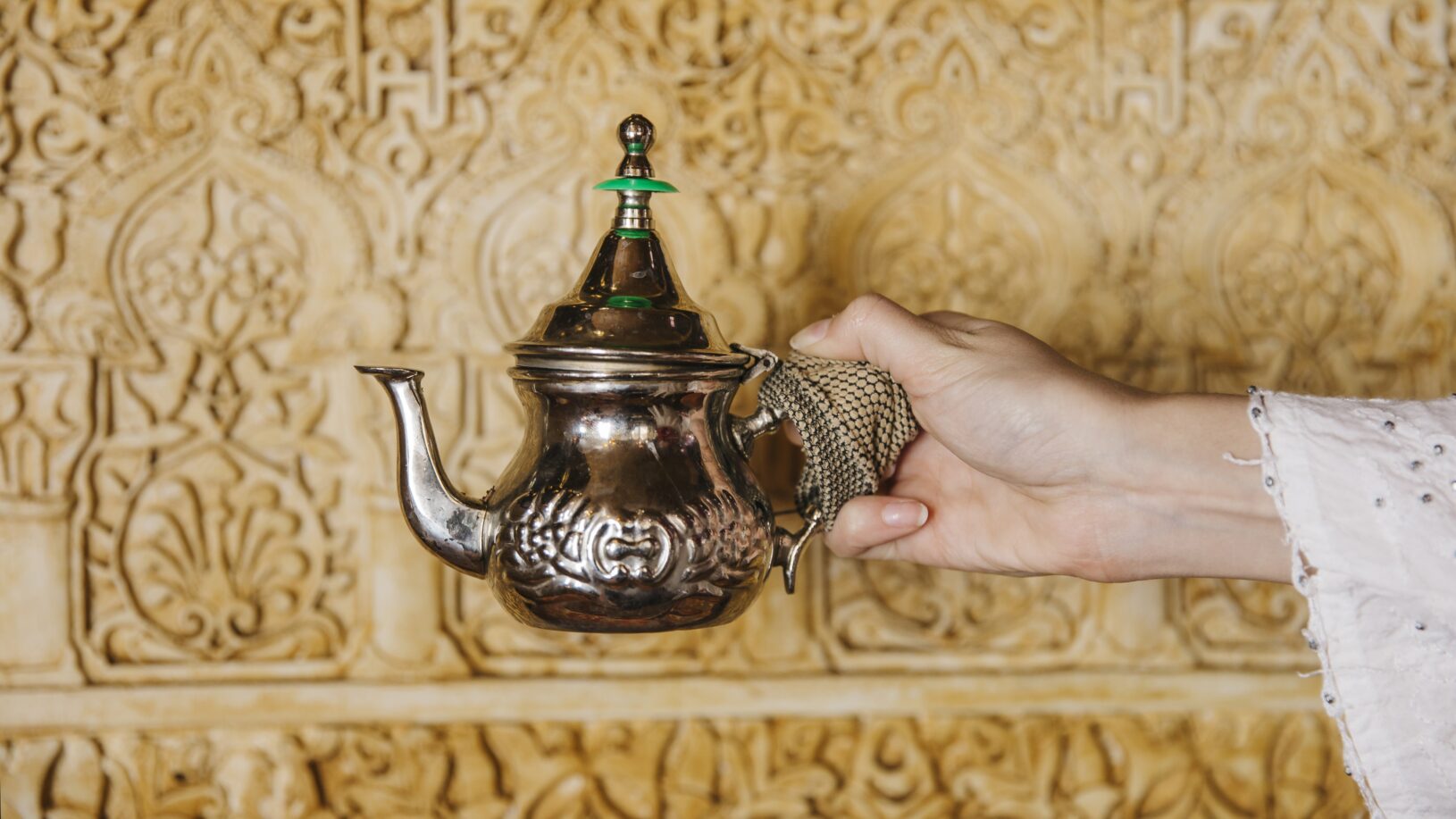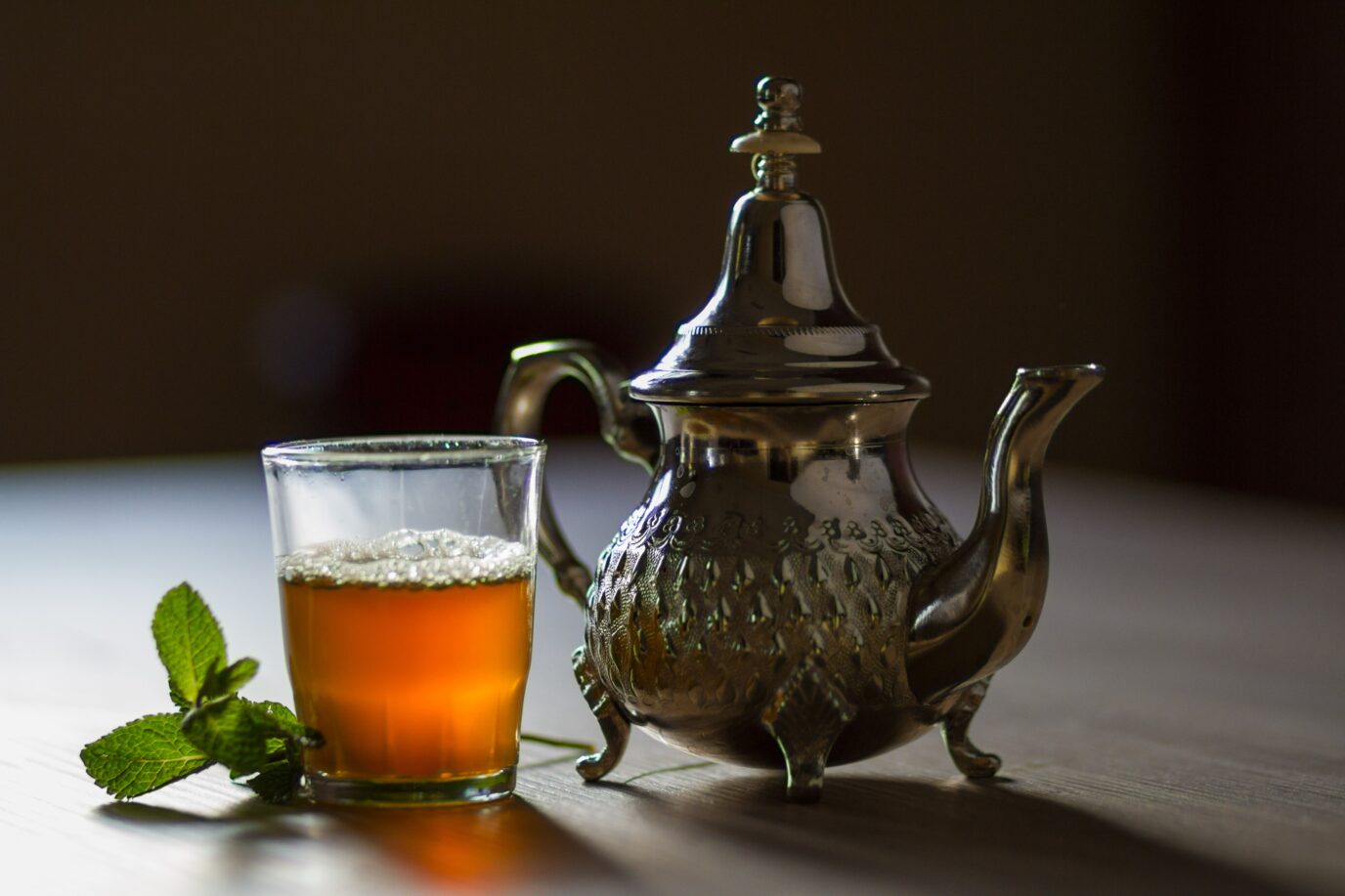In Morocco, Moroccan mint tea transcends its role as a mere beverage. It embodies hospitality and holds a central position in the culture. It is served throughout the day, whether to welcome guests, conduct business, or simply conclude a meal.
The tea is meticulously prepared in a traditional teapot atop a gas flame and served in delicate crystal glasses. The process of brewing Moroccan mint tea is often overseen by the host or the head of the household. Mastering the art of making tea is considered a fundamental skill within Moroccan culture.
One can learn about the components of Moroccan tea, understand the properties of the herbs used, and discover how to brew the tea oneself.
What is Moroccan Mint Tea?
Moroccan mint tea is a traditional national drink, famous for it in all the cities and villages of this ancient country.
As you move from one place to another, tea moves with you as if it were your shadow.
It is a symbol of hospitality and enjoyable gatherings. It is hot and accompanied by mint, which gives your stay an enchanting taste and makes you fall in love with it.
It is the main ritual during holidays and parties, and Moroccans are creative in preparing and serving it, making it a magical drink that will make you love visiting Morocco.
Moroccan mint tea: ingredients and effects
Moroccan mint tea impresses with its taste and has health benefits. The ingredients of Moroccan Tea differ depending on the region. However, these two components are always included.
Green Tea
The Arabs began importing green Tea from China as early as the ninth century. To this day, green Tea is imported from Asia because the Tea does not thrive in Morocco. It forms the basis for the Moroccan national drink. The Gunpowder variety is mainly used. It is characterized by tea leaves that are finely rolled into balls. Green Tea has long been valued for its health benefits: it positively affects the metabolism and cardiovascular system. In addition, According to a study from Japan, antioxidants reduce oxidative stress and fight free radicals.
Moroccan mint
The second essential component of Moroccan Tea is Moroccan mint or nana mint. It has a milder taste than the peppermint commonly used in our country and is widespread throughout Morocco. Similar to peppermint tea, Moroccan mint is said to affect digestion positively. Also, mint has antimicrobial, antiviral, and antioxidant properties. However, studies on Moroccan mint, in particular, still need to be completed.
In the more fertile north of Morocco, other herbs are also added to the traditional mint tea:
Lemon Verbena
It gives the Tea a fresh, lemony note. Lemon verbena contains valuable essential oils that have been proven to have a mood-enhancing and calming effect. According to one study, the herb can also help with sleep problems.
Wormwood
The plant is called Sheba in Morocco and is valued for its health-promoting effects. The herb has been shown to aid digestion and has powerful antibacterial properties. According to another study, it should even work against worm diseases.
Traditional Moroccan mint tea
Traditional Moroccan mint tea is prepared by brewing green tea directly in a standard metal teapot over a flame. Unlike the method used in some Asian cultures where green tea is boiled and then kept in a pot, Moroccan mint tea is brewed directly. Green tea contains bitter substances that contribute to its health benefits but may have an unfamiliar taste initially. In Morocco, a significant amount of sugar is often used to sweeten the tea.
How To Make Moroccan Mint Tea
1. Bring half a liter of water to a boil.
2. Usually, the sugar is already dissolved here. In Morocco, half a liter of Tea contains an impressive 100 grams. But you can change that as you wish.
3. Add a tablespoon of green Tea to the water and let the Tea steep for about 10 minutes.
4. Then remove the tea leaves. If you want the Tea to be strong and bitter, as is usual in Morocco, leave the parts of the plant in the Tea.
5. Add a sprig of fresh pine mint to the pitcher and a few lemon verbena and wormwood leaves if you like.
6. Pour it into a small crystal glass in a high arc when the Tea is ready. Taste the Tea to see if it has the right sweetness, and run it back into the pitcher. Repeat this process three to five times. It should ensure the classic foam crown.
7. Then serve the Tea.
The Tea ceremony in Morocco
Tea is the national drink in Morocco. Business is concluded, parties are celebrated, and guests are welcomed with Tea. In Morocco, it is considered very impolite to refuse this hot drink. There are significant differences in the preparation depending on the region and tribe. The basis is the green tea variety “Gunpowder.” A wide variety of herbs are then added to this essential ingredient. The most popular and well-known is probably the Moroccan mint – also called Panamint. But also lemon balm, thyme, sage, and wormwood are often added. What should not be missing from an original Amazightea is sugar. Natural sugar, no honey or cane sugar, preferably in cube form. As so often, it depends on the quantity. The more, the better. The sweetness of the Tea determines how welcome a guest is.
The background of the Moroccan Tea infusion
Traditional tea preparation takes a lot of time. The Tea is emptied from the teapot into the glass and back again in a high arc several times to create a nice foam layer. It may be more of a show; for others, this ceremony is used to develop the aroma or cool down the Tea. But it also has a different background and comes from the camel caravans that once traveled through the mountains and deserts. The dust and sand that got into the Tea got caught in the foam of the Tea and could therefore be easily blown away. It was possible to slurp the Tea cleanly.
Slow down and sip to get the most out of your cup of Tea. It’s not so much about the Tea as it is about socializing and getting to know one another.
Frequently Asked Questions
What is Moroccan tea made of?
Fresh green tea leaves, sugar, and mint are used to make Moroccan tea, also called Maghrebi mint tea. As a sign of welcome, it is made in a unique teapot and served in small glasses. The tea is usually made with Chinese gunpowder green tea with a strong, smokey smell. Sugar and fresh mint leaves are added to the tea before brewing. Then, it is poured down from above to make a foamy layer. Tea is essential in Moroccan culture, and sweet treats are often served with it at parties and other events. A lot of people see it as a sign of kindness and warmth.
What is special about Moroccan tea?
Moroccan tea is a unique and essential part of Moroccan culture, and it stands for friendliness and welcome. It is usually given to guests as a friendly welcome. It has a unique mix of spicy and incredible tastes because it is made with Chinese gunpowder green tea, fresh mint leaves, and sugar. Care must be taken when making Moroccan tea, which is usually done with a unique pot and pouring from a height to create a foamy layer on top. In addition to having a great taste, Moroccan tea is good for you because it has vitamins that help your immune system and stomach. Moroccan tea is a crucial way to connect with other people and learn about the culture of Morocco.
What is the traditional Moroccan tea?
Maghrebi mint tea, another name for Moroccan mint tea, is the official drink of Morocco and a sign of friendliness. Teapots are used to make this hot drink, which is made with green tea, fresh mint leaves, and sugar. It is typically served in small glasses to greet guests. Many people use Chinese gunpowder green tea, which gives the tea a smokey taste and pungent smell. Mint and sugar make the tea taste sweet and refreshing. Some tea is brewed for a while and then poured from a high place to make a foamy layer on top. Mint tea is an integral part of Moroccan culture. It is drunk at meals, get-togethers, and social events, and it is often served with sweets that reflect warmth and kindness.
Why is Moroccan tea so sweet?
Many people in Morocco like tea because it tastes good with sugar. It makes the mint taste better and prevents the tea leaves from being too bitter. A nice thing that Moroccans do for friends is to give them lovely tea. Berber tea brings out the flavors of sweets like cakes and cookies, so they go well together. Arabs think showing kindness and love is nice by giving sweet tea and snacks. On the other hand, the sweetness level changes from place to place and person to person. Moroccan culture is deeply rooted in tea, so it is famous worldwide for its unique and rich taste.

